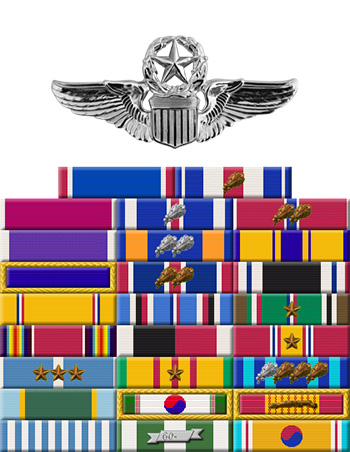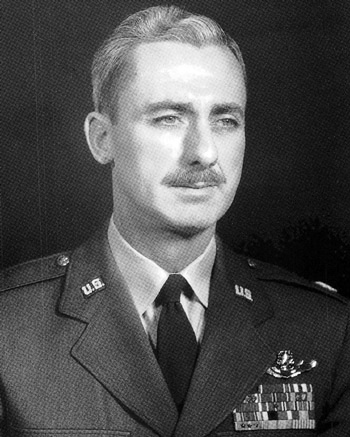
|
Vermont Garrison |
 |
|||
| Rank, Service | ||||
Colonel O-6, U.S. Air Force |
||||
| Veteran of: | ||||
|
||||
| Tribute: | ||||
Vermont Garrison was born on October 21, 1915, in Mount Victory, Kentucky. He enlisted in the Aviation Cadet Program of the U.S. Army Air Forces on March 17, 1941, but before finishing training he joined the Royal Air Force, where he served until July 13, 1943, when he rejoined the U.S. Army Air Forces. After transition training in the P-47 Thunderbolt, Lt Garrison was assigned to the 4th Fighter Group in Europe where he was credited with shooting down 7.33 enemy aircraft in aerial combat. Garrison was shot down on March 3, 1944, and taken as a Prisoner of War by the Germans. He was liberated by the Russians on May 1, 1945, and remained in Europe as part of the Army of Occupation until 1946. Captain Garrison served in serveral fighter squadrons from 1947 to 1950 and was serving with the 4th Fighter Interceptor Wing when it was sent to Japan in support of the Korean War in early 1951. The Wing was moved from Japan to Korea in the Spring of 1951, and Garrison was credited with the destruction of 10 enemy aircraft between February and July 1953, for a two-war total of 17.33, which also made him one of only 7 men to become an ace in both World War II and Korea. Colonel Garrison again flew in combat during the Vietnam War, where he served as Vice Wing Commander of the 8th Tactical Fighter Wing from August 1966 to July 1967, flying 97 combat missions in the F-4 Phantom II. He next served as Commanding Officer of the 408th Fighter Group at Kingsley Field, Oregon, from July 1967 to August 1968. Col Garrison served as Vice Commander of the 26th Air Division at Adair AFS, Oregon, from August 1968 to June 1969, when he became Wing Commander of the 4780th Air Defense Wing at Perrin AFB, Texas, serving until July 1971. Col Garrison's final assignment was as Commander of the 4661st Air Base Group at Hamilton AFB, California, from July 1971 until his retirement from the Air Force on March 1, 1973. Col Garrison wears Command Pilot Wings and was credited with destroying 17.33 aircraft in aerial combat during WWII and Korea, with another 3 probables and 8 damaged. He died on February 14, 1994, and was buried at Arlington National Cemetery. |
||||
|
||||

